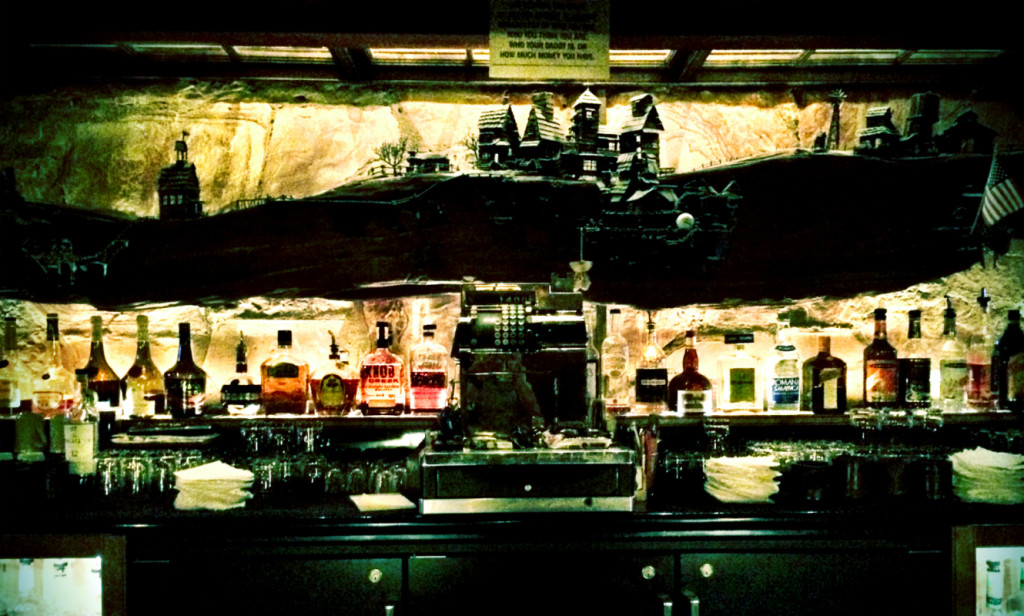Bar Design: The Untasted Ingredient

On March 31, 2016, more than 1,100 businesses in the District of Columbia will file to renew their ABC (Alcoholic Beverage Control) licenses. That number includes bars, hotels, theaters, museums, trains, boats, clubs, and caterers, and accounts for more than half of all alcoholic beverage licenses in the District. While this number is staggering, it’s not necessarily surprising, especially when you consider that D.C. is number one in the United States in wine consumption per capita. However, this saturation of watering holes in the area has lent insight into an interesting trend: the evolution of bar design.
The look and feel of a venue is as important as the drinks on the menu. It matters very little if a bar has 13 types of Amaro, or a red wine selection that would make a Professor of Enology blush, if the bar itself is nothing more than a shelter from the elements outside. And while it is true that Washington D.C. has a tendency to take service industry cues from other markets (primarily New York City), the steady growth of the market has created a figurative fork in the road for prospective owners. New bars, especially cocktail bars/speakeasies, have to make a choice of forging new ground and moving past the neo-speakeasy design (likely introduced to the market 14 years ago by New York City’s now-closed Milk & Honey), or “lean on the orthodoxy and homogeneity of the speakeasy rubric.”
As explained in an excellent article by Christopher Ross entitled “Bar Design in the Post-Speakeasy Era,” cocktail bars are entering their “modernist, subjectivist phase” wherein bar owners have the freedom “of making an establishment primarily dedicated to mixing top-shelf drinks look however they want it to look.” In D.C., new bars are seemingly stuck in a grey area where design, service, and cocktails still do not work in tandem to create a “transformative experience with no disconnect in aesthetic.” Bars like the newly opened Quarter+Glory, owned by the New York City-based Public House Collective, present themselves as “an authentic ode to the bars of old New York” with high ceilings, sprawling liquor shelves, and a long, straight bar situated close to the door. However, rather than seeming like a New York bar transplanted to the District, Quarter+Glory fails to convey anything more than a replication of design aesthetic no longer seen as unique and, in many cases, desired. On the other hand, bars that shun the design cues of the modern speakeasy, and instead promote the narrative of a neighborhood bar, often seem to stumble the moment a patron orders a cocktail. The inability to properly measure a drink or siphon excess ice, or shaking a drink that calls for stirring, all amount to instances where the “willful rebellion against the modern speakeasy” is nothing more than a cover for cutting corners.
Though it is unreasonable to think bars intentionally fail to connect design, functionality, and experience, it is within reason to ask if this issue is due to a fundamental disconnect between clientele and the bar. In speaking with Derek Brown of Drink Company (and arguably D.C.’s most prominent barkeep) recently, I asked about his reasoning for opening Mockingbird Hill, a bar centered on sherry and ham. Mr. Brown responded that even though there was no clear market demand for a bar focused on sherry, he felt he could create interest through a well-curated experience. In his response, Mr. Brown exhibited a headstrong approach all too often misappropriated by new bar owners. But whereas Mr. Brown correctly judged his target customers — substantiated by his wealth of knowledge and experience in the D.C. service industry — many new bar owners lack a full understanding of D.C.’s changing demography. More people are staying in the city and allowing their expectations of the D.C. service industry to form independent of previous experiences elsewhere. As a result, expectations for something new — something that can meld technical quality with a unique aesthetic experience — are no longer passive.
Despite signs of change becoming ever more visible throughout D.C., population trends provided by the office of the D.C. chief financial officer point to a population that “cannot be assumed to continue to increase in the future as it has in the recent past.” Washington, D.C. is slowly building a new identity, one that is proudly represented by its constituency. The institutions we frequent, especially the bars we spend countless hours in, need to represent our sensibilities and not those of the past or of a different city; they need to give us the impression that the experience is curated by one of us.
Ruben Gzirian is a pursuer of fine whiskeys, with Michter’s US*1 American Whiskey his current favorite. He holds an MA from the Middlebury Institute of International Studies and enjoys reading World War II history, with a focus on the Eastern Front.

